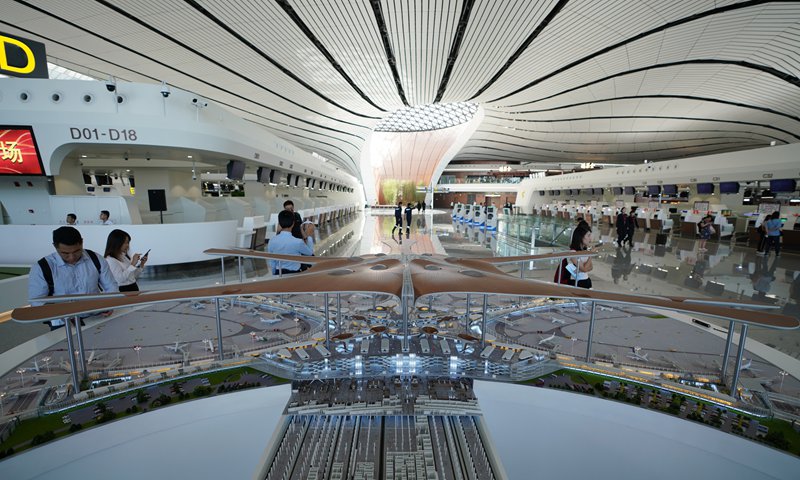Chinese President Xi Jinping opens new Beijing Daxing International Airport

President Xi Jinping on Wednesday inaugurated a state-of-art airport in Beijing, marking a monumental moment that highlighted both the country’s prowess in building massive infrastructure and its ambition to further connect the world in keeping with its rising global status.
With flights departing for different domestic destinations on Wednesday afternoon, the Beijing Daxing International Airport, whose elegant design, advanced technologies and massive capacity have already gained global attention, officially began operating.
Xi stressed that the new airport can complete its scheduled construction tasks in less than five years and start operating smoothly, fully demonstrating the strength of China’s engineering.
China Southern Airlines’ A380 became the first flight taking off from the new airport at 4:22 pm to Guangzhou, capital of South China’s Guangdong Province. This was followed by other carriers, including China Eastern Airlines, Air China, China United Airlines, Capital Airlines, Hebei Airlines and Xiamen Air, which began their respective operations.
The airport was constructed at a cost of 80 billion yuan ($11.2 billion). The airport, which has four runways, parking space for 150 airplanes and a 700,000-square-meter terminal building, is expected to handle 45 million passengers by 2021, and 72 million by 2025.
By comparison, the busiest airport in the world, Hartsfield-Jackson Atlanta International Airport, handled 107 million passengers in 2018.
The successful launch of the new airport represents the formation of the “two cities and three airports of tens of millions of passenger flow” pattern in Beijing and North China’s Tianjin Municipality – the first such pattern in the history of China’s civil aviation industry, authorities of the new airport said.
New drive
The number of regular civil aviation routes was 12 during the initial stage of the People’s Republic of China and rose to 4,945 in 2018, according to data from the National Bureau of Statistics.
Civil aviation routes in terms of mileage increased from 11,000 kilometers in 1950 to 8.38 million kilometers in 2018. The number of civil aviation airports increased from 36 in 1949 to 233 in 2018.
The new airport will also drive passenger flow, goods, capital and information and facilitate the integration development of China’s Jingjinji (Beijing-Tianjin-Hebei) area, experts noted.
The Daxing airport is a new engine for economic growth in China, said Yan Xiaodong, spokesman for the North China regional administration of the Civil Aviation Administration of China.
The new airport will help promote the upgrade in China’s air network as it will more conveniently connect China with Japan, South Korea and other Northeast Asian countries, experts said.
By the end of 2018, China has 235 civil airports, including 37 with at least 10 million passengers annually. Among these, 10 were at the 30 million level.
There are 66 airline companies, 20 from Chinese mainland and 46 from Hong Kong and Macao special administrative regions, the island of Taiwan as well as foreign countries, willing to station at the Daxing airport after flights commence. A total of 116 air routes will be opened, including 101 domestic and 15 global routes.
China Eastern Airlines said it will put 200 medium and large aircraft into operation at the new airport, connecting the Americas, Europe, Oceania, Southeast Asia, Japan and South Korea, as well as China’s Hong Kong, Macao and Taiwan to the mainland.
So far, China Southern Airlines has launched 172 routes from 38 countries and regions along the Belt and Road Initiative (BRI) , handling more than 15 million trips each year. Source : Global Times
Sept. 25 , 2019
Image : A scale model of the Beijing Daxing International Airport sits inside the airport .. The new international airport is located 46 kilometers south of downtown Beijing. Photo: Xinhua














